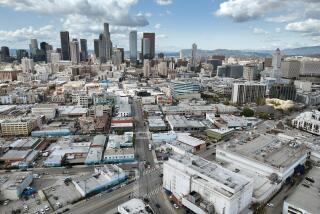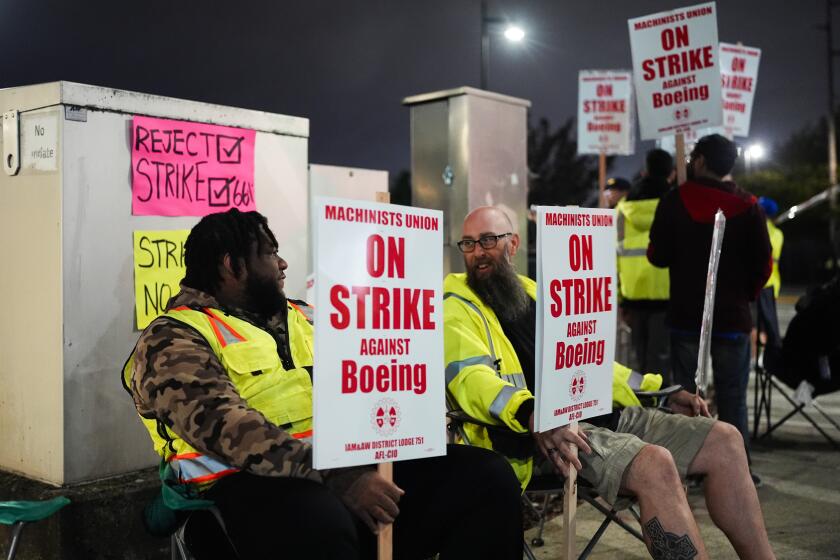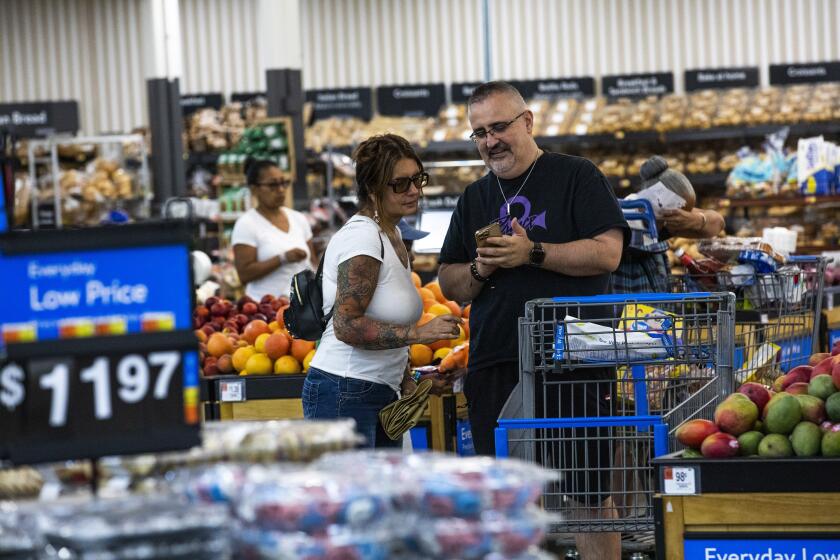Target plans another urban-format store for Los Angeles
Retail giantTarget Corp., which is already working on stores in Westwood and downtown Los Angeles, announced plans for another smaller-format urban shop at the Beverly Connection shopping center on West 3rd Street near the Beverly Center.
California will have four of these urban stores, dubbed CityTargets, with three in Los Angeles and one in San Francisco.
The Westwood store, at the Westwood Market Place near UCLA, will open first, in July, followed in October by the downtown Los Angeles store in the Fig at 7th mall. The Beverly Connection store is to open in March.
“L.A. has always been one of our top metro areas,” said Cary Strouse, Target’s senior vice president of stores for the Western region. “With these additional locations, we have a strong opportunity to reach more guests living in these urban areas.”
The latest store will take up a 99,000-square-foot space on the second floor of the Beverly Connection, which is across the street from the high-end Beverly Center.
Strouse said Target was also looking to open additional stores in other big cities around the country. Three are already planned in Chicago, Portland and Seattle.
The urban stores will carry fresh groceries, household basics and the other product categories offered by a standard Target, but will be tweaked for city residents and commuters. Think less patio furniture, more pre-made sandwiches.
“You won’t see a 36-pack of toilet paper at a CityTarget, for example, whereas you might see that in a normal Target,” Strouse said.
The smaller CityTarget stores will range from 85,000 to 100,000 square feet; in comparison, the average Target is 130,000 square feet and the average Super Target is 175,000 square feet.
Target’s move is part of a new direction among big-box retailers to bring smaller stores to more densely packed areas. Best Buy is downsizing some locations and opening smaller outlets.Wal-Mart has announced plans to open 17 of its smaller-format Neighborhood Markets in California, including one in downtown Los Angeles’ Chinatown neighborhood.
“Most of the suburban markets are more saturated for big-box operators like Target,” said Matt Arnold, a consumer analyst with Edward Jones & Co. “If these pilot stores prove out with good economics, you can imagine all these large, high-population markets will be opportunities for growth.”
Wal-Mart and Target are using different strategies to tackle the same city markets, analysts said. Wal-Mart is opening grocery stores, while Target’s urban locations are essentially scaled-down versions of its standard stores, with apparel, electronics and other goods for sale.
“If Target’s approach proves to be relevant, then it will have better economics than Wal-Mart because groceries are a very, very low-margin business,” Arnold said. “But the odds of getting high traffic are better if you have a broader grocery market.”
Target is betting that its strategy will pay off.
“You will not see 50% of the store with food only,” Strouse said. “We want to give guests everything.”
More to Read
Inside the business of entertainment
The Wide Shot brings you news, analysis and insights on everything from streaming wars to production — and what it all means for the future.
You may occasionally receive promotional content from the Los Angeles Times.











